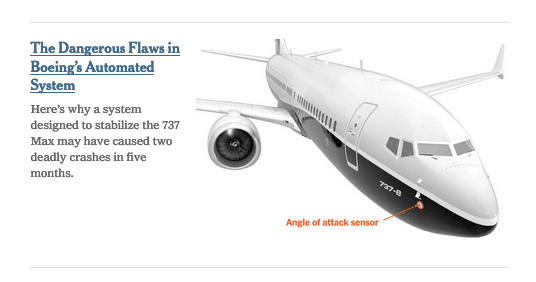Black box data from a doomed Ethiopian Airlines flight suggests the crash was caused by a faulty sensor that erroneously activated an automated system on the Boeing 737 Max, a series of events suspected in an Indonesian disaster involving the same jet last year.
Data from a vane-like device, called the angle-of-attack sensor, incorrectly activated the computer-controlled system, according to several people who have been briefed on the contents of the black box in Ethiopia. The system, known as MCAS, is believed to have pushed the front of the plane down, leading to an irrecoverable nose-dive that killed all 157 people aboard.
The black box, also called the flight data recorder, contains information on dozens of systems aboard the plane. The black boxes on the jets, Boeing’s latest generation of the 737, survived the crashes, allowing investigators to begin piecing together what caused the disasters. Both investigations are continuing, and no final determinations have been made.
The new connections between the two crashes point to a potential systemic problem with the aircraft, adding to the pressure on Boeing. The company already faces scrutiny for its role in the design and certification of the plane. The Federal Aviation Administration delegated significant responsibility and oversight to Boeing.




